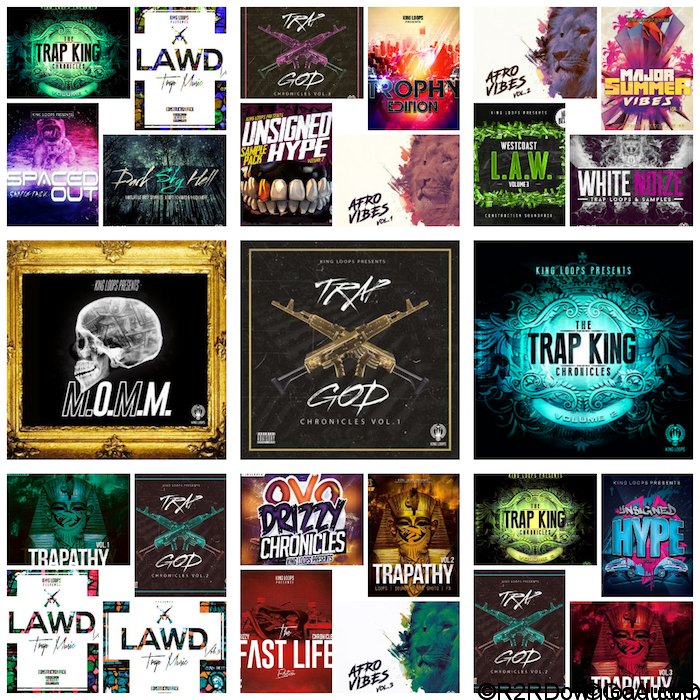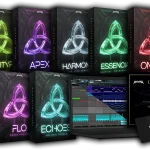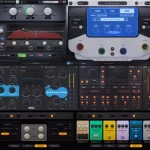OWNHAMME Heavy Hitters Collection – Volume I

CABINETS AND SPEAKERS
The “412 DZL” is based on a Diezel front loaded 4×12 cabinet.
– “12K” based on Celestion G12K-100 speakers.
– “GOV” based on Eminence Governor speakers.
– “V30” based on Celestion Vintage 30 speakers.
The “412 MAR” is based on a Marshall Mode Four 4×12 cabinet.
– “EDVH” based on Celestion G12EVH speakers.
– “T75” based on Celestion G12T-75 speakers.
– “V30” based on Celestion Vintage 30MF speakers.
The “412 MES” is based on a Mesa Standard/Oversized 4×12 cabinet.
– “G80” based on vintage Celestion G12-80 (original “Classic Lead”) speakers.
– “H30” based on Celestion 75 Hz G12H-30 “cream back” speakers.
– “V30” based on Mesa/Boogie custom Celestion Vintage 30 speakers.
The “412 ORN” is based on an Orange PPC412 4×12 cabinet.
– “H30” based on 1971 Celestion 75 Hz G12H-30 speakers.
– “M25” based on 6402 cone Celestion 75 Hz G12M-25 speakers.
– “V30” based on 8 ohm Orange Amps custom Celestion Vintage 30 speakers.
V30 CAB BLENDS
In the V30 Cab Blends section, cabinets are mixed together in pairs using the files from the V30 section of each.
The naming convention is an indication of sonic characteristics regarding the way they are combined and is as
follows:
“Cabinet 1 + Cabinet 2” – where the cab listed first is the dominant one in the mixture.
THE MICS AND MIC MIXES
In this library, the speaker cabinet was sampled with many microphones and capture types.
For microphones with position numbers 00 through 10, these positions represent movement across the face of the
speaker along the relative sweet spot from brighter and closer to center (00) to darker and further out on the cap
or cone (10). These numbers do not represent any specific unit of measure and are merely sequential arbitrary
definitions.
Positions labeled “EDGE” place the microphone near the rim of the speaker cone, but still in a tonally usable area.
Positions labeled “FRED” place the microphone at the very center of the speaker at a 45 degree angle, ala the
popular “Studio Fredman 45” technique.
Below are explanations of the mic models and pre-made mix types:
MICS
“57” is based on a modern production Shure SM57 dynamic microphone.
“70” is based on a Microtech Gefell UMT70S condenser microphone.
“121” is based on a Royer R121 ribbon microphone.
“160” is based on a Beyerdynamic M160 ribbon microphone.
“414” is based on an AKG C414 B-ULS condenser microphone.
“421” is based on a vintage Telefunken MD421-5 dynamic microphone.
“MID” is based on a mid field placed AEA R92 ribbon microphone.
“REAR” is based on a vintage Neumann KM84 condenser microphone.
“ROOM” is based on a vintage Neumann KM84 condenser microphone.
MIXES
“CHUNK” is based on a more “fat” sounding version of the PROG mix.
“CUT” is based on an on-axis 57 and off-axis 57 mic combination.
“CUT+121” is based on a 121 added to the Quick-Start CUT mix.
“JS” is based on a multi-mic configuration created by Jon Symons.
“MDRN” is based on a 57 + 421 mic combination.
“OH1” is based on a 57 + 121 mic combination.
“OH1F” is based on a more “fat” sounding 57 + 121 mic combination.
“OH2” is based on a 421 + 121 mic combination.
“OH2F” is based on a more “fat” sounding 421 + 121 mic combination.
“PROG” is a proprietary mix that excels in modern progressive music styles.
“SP2” is based on a multi-mic configuration created by Scott Peterson.
The mix files in the “Summary” folder are based on a 57 + 70 + 121 mic combination. This mix fits somewhere in
the middle of the brightness and darkness scale of the OwnHammer pre-made mix types.
QUICK START CONTENTS
The Quick Start folder contains the OwnHammer picks for the most universally ideal single mic and mix positions.
Though your mileage may vary, this is a great starting point to get an idea of the overall sound of the cab, speaker,
mics, and mixes, and discovering which options you may wish to explore further in the auditioning process.
MID BOOST FILES
In the Quick Start folder, all contents have a traditional entry picked from the Mics and Mixes sections, as well a
Quick Start contents exclusive feature: the mid boost alternate voicing. The Mid Boost files end with an “M+”, and
can be useful in counter balancing bright or scooped amps or amp models, guitars and pickups, bus processing,
and/or playback systems – especially PA’s at high volumes. M+ IR’s can also be appropriate for exposed and center
panned solo/lead guitar sections in both tonality and feel, or personal/artistic preference to mid heavy tones.
Wave audio format IR’s (.wav) are compatible with convolution reverb type loaders in recording software and outboard hardware units and are provided in:
24 bit resolution
44.1, 48, 88.2, and 96 kHz sample rates
mono channel count
minimum phase transformed (“Mpt”) and non-minimum phase transformed
200 and 500 ms decay tail lengths
For added convenience, .wav files appropriate for conversion or submission to the following platforms have been separated out and designated within the library structure:
Atomic Amplifire
Fractal Audio Systems hardware/software
Kemper Profiling Amp
Line 6 Helix
Two Notes hardware
KNOW YOUR PLATFORM’S FILE FORMAT!
THIS LIBRARY CONTAINS .WAV FORMAT FILES ONLY.
<<Download Links>>
Hitters1.part01.rar – 700.0 MB
Hitters1.part02.rar – 700.0 MB
Hitters1.part03.rar – 700.0 MB
Hitters1.part04.rar – 700.0 MB
Hitters1.part05.rar – 700.0 MB
Hitters1.part06.rar – 700.0 MB
Hitters1.part07.rar – 700.0 MB
Hitters1.part08.rar – 700.0 MB
Hitters1.part09.rar – 700.0 MB
Hitters1.part10.rar – 700.0 MB
Hitters1.part11.rar – 700.0 MB
Hitters1.part12.rar – 647.3 MB

![Origin Sound Sample Pack [Latest]](https://www.goaudio.net/wp-content/uploads/2017/08/collage-1-1.jpg)






![Toontrack Hollowbody EBX [WIN+MAC]](https://www.goaudio.net/wp-content/uploads/2024/09/Toontrack-Hollowbody-EBX-150x150.png?v=1726103695)
![Toontrack LATEST RELEASES MIDI BUNDLE [SEP 2024]](https://www.goaudio.net/wp-content/uploads/2024/09/gandr-collage-11-150x150.jpg?v=1725764744)
![Blockbuster Sound Sand Dune & Mockingbird [BUNDLE]](https://www.goaudio.net/wp-content/uploads/2024/08/blockbuster-sound--150x150.png?v=1724378090)

![Blockbuster Sound Mermaids Sirens & Horror Pack [BUNDLE]](https://www.goaudio.net/wp-content/uploads/2024/08/Blockbuster-Sound-150x150.png?v=1723854097)



![AEJuice I Want To Learn It All Bundle 2024 [NEW]](https://www.goaudio.net/wp-content/uploads/2024/12/juice-150x150.webp)


